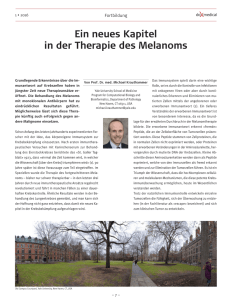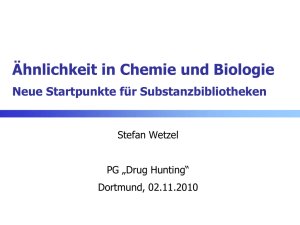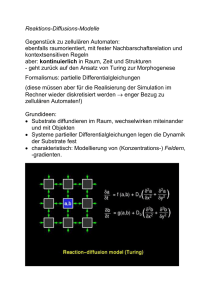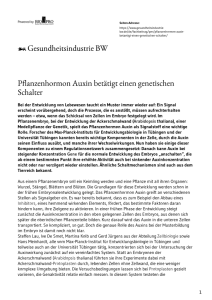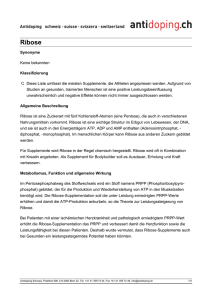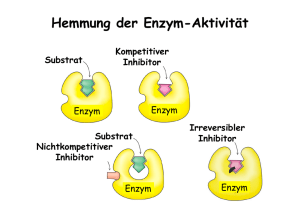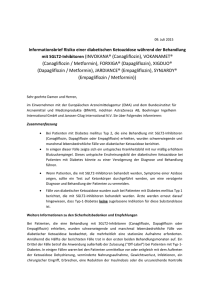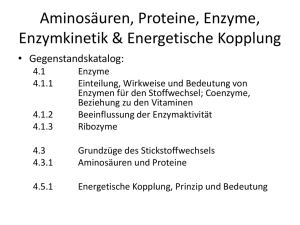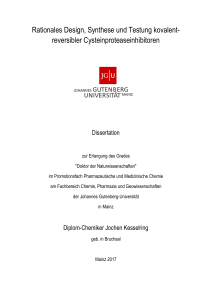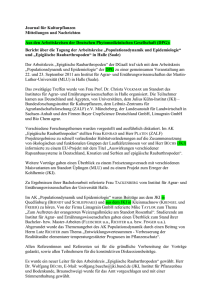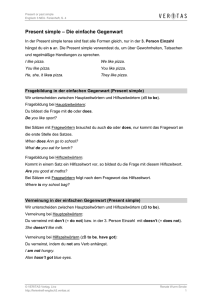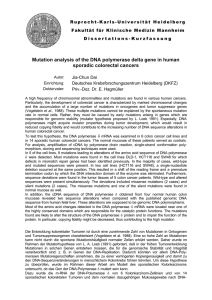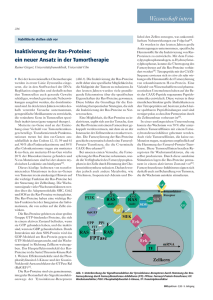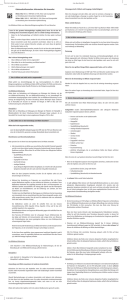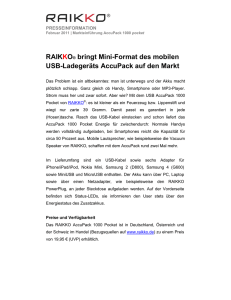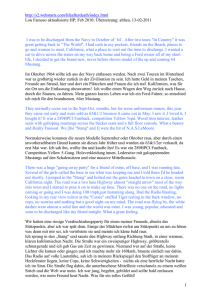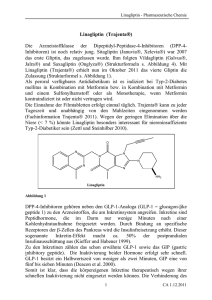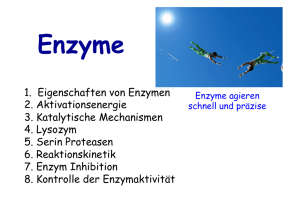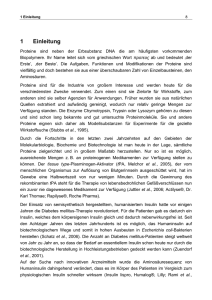A Novel Approach towards Antimalarials: Design and Synthesis of
Werbung
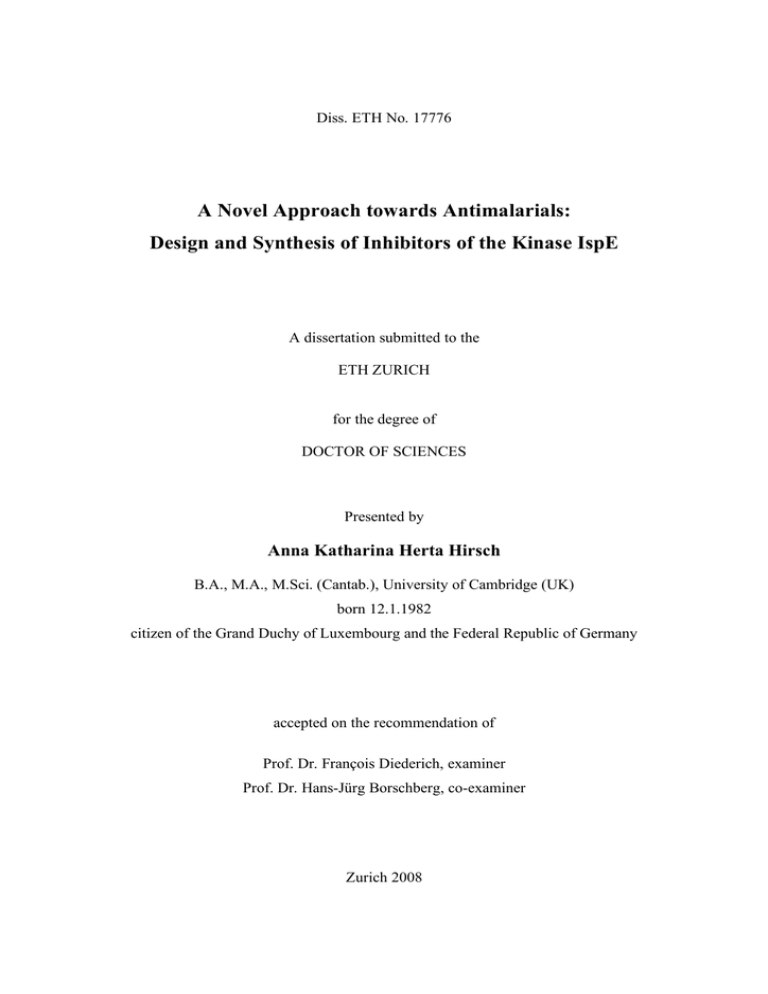
Diss. ETH No. 17776 A Novel Approach towards Antimalarials: Design and Synthesis of Inhibitors of the Kinase IspE A dissertation submitted to the ETH ZURICH for the degree of DOCTOR OF SCIENCES Presented by Anna Katharina Herta Hirsch B.A., M.A., M.Sci. (Cantab.), University of Cambridge (UK) born 12.1.1982 citizen of the Grand Duchy of Luxembourg and the Federal Republic of Germany accepted on the recommendation of Prof. Dr. François Diederich, examiner Prof. Dr. Hans-Jürg Borschberg, co-examiner Zurich 2008 Abstract Abstract The enzymes of the non-mevalonate pathway for isoprenoid biosynthesis are therapeutic targets for the treatment of important infectious diseases. Whereas this pathway is absent in humans, it is used by plants, many eubacteria and apicomplexan protozoa, including major human pathogens such as Plasmodium falciparum, the causative agent of malaria. The development of drugs with a novel mode of action for the treatment of malaria is of urgent necessity in light of the rapid emergence of multi-drug-resistant parasites. Malaria still poses a major health concern, being responsible for an estimated 300–500 million new infections and 1−3 million deaths annually. The kinase IspE (4-diphosphocytidyl-2C-methyl-D-erythritol kinase, EC 2.7.1.148), at the centre of the non-mevalonate pathway, was chosen as target for structure-based ligand design. Using molecular modelling software and the X-ray crystal structure of Escherichia coli IspE as a ternary complex with its substrate and a non-hydrolysable adenosine 5’-triphosphate (ATP) analogue, the first inhibitors of this enzyme were developed. The series of synthesised target molecules represent the first example of drug-like molecules that inhibit enzymes of the non-mevalonate pathway without the need for a phosphate or phosphonate moiety. In the first stage, the bisubstrate approach was adopted, resulting in a small library of compounds targeted to both the substrate- and ATP-binding pockets. However, because of solubility problems the series of compounds could not be assayed. Only one derivative containing a cytidine moiety, (+)-92, proved to be soluble under the enzyme-assay conditions but displayed only weak inhibition. Thus, a second generation of inhibitors were designed by taking into consideration a number of features. This time they were made to occupy exclusively the substrate-binding pocket and an adjacent, newly discovered, small, hydrophobic pocket that is not occupied by either substrate or cofactor. Cytosine was used as a central scaffold, the ribose moiety was replaced by a suitable analogue, and a vector was included to be directed into the small subpocket. According to modelling, the inhibitors should be stabilised by the same hydrogen-bonding pattern that the substrate forms with the protein. In addition the ligands take advantage of a perfectly set up double π-sandwich that holds the nucleobase scaffold and ribose analogue in the desired position. The ribose analogue could also feature a sulfur atom as there is potential for additional stabilisation by a sulfur–aromatic interaction. Furthermore, the vector should IX Abstract form hydrogen bonds to the catalytically important residues and benefit from numerous O NH2 N H N O O S R' hydrophobic contacts in the small subpocket. By targeting the substrate- rather than the ATP-binding pocket, the selectivity of the resulting inhibitors was expected to be superior. N A systematic variation of the different components of the modular inhibitor was R performed: the ribose analogue (R), the propargylic sulfonamide vector and its substituent (R’) as well as the central nucleobase scaffold were modified to afford a library of potent inhibitors. Enzyme assays were performed to determine the IC50 and Ki values of the library of compounds. The biological assays demonstrated potent inhibition of E. coli IspE with the best inhibitors featuring Ki values in the nanomolar range. The structure–activity relationships that were obtained give some indication that the proposed binding mode is adopted by the inhibitors. In addition, the series of compounds represent the second example of the “55% rule” for the optimal filling of cavities applied to an enzymatic context. Because of a lack of full water solubility, no co-crystal structure could be obtained with IspE and the second-generation inhibitors. Thus, water-soluble derivatives were thought of, using chemical intuition and calculated physicochemical properties as a guide. Out of the successful candidates, the oxetane derivative 215 was cocrystallised with Aquifex aeolicus IspE. The crystal structure shows that the ligand occupies the substrateand not the ATP-binding pocket. As predicted, the cyclopropyl substituent of the sulfone moiety occupies the small cavity not used by the substrate. In the co-crystal structure, a diphosphate anion binds to the glycine-rich loop, which normally accepts the triphosphate moiety of ATP. Finally, the initial bisubstrate approach was adopted to design inhibitor (±)-223, which N N N NH2 N N O N N should – according to modelling – occupy the substratebinding pocket with the established scaffold. additional vector places a heteroaromatic phosphate analogue in the glycine-rich loop. Inhibitory activity N was measured for this compound, providing possibly S (±)-223 Ki = 17.0 ± 5.0 µM the first example of the use of heteroaromatic rings as alternative phosphate analogues and validating the bisubstrate approach. X An Zusammenfassung Zusammenfassung Die Enzyme des mevalonatunabhängigen Weges zur Biosynthese der Isoprenoid-Vorläufer sind aussichtsreiche Ziele für die Entwicklung neuer Medikamente gegen wichtige Infektionskrankheiten. Während dieser Biosyntheseweg dem Menschen nicht zur Verfügung steht, wird er von Pflanzen, vielen Eubakterien und apikomplexen Protozoen verwendet. Dazu gehören wichtige menschliche Pathogene wie der Malaria-Erreger Plasmodium falciparum. Die Entwicklung von Antimalaria-Wirkstoffen mit einem neuartigen Wirkmechanismus ist angesichts des vermehrten Auftretens von Parasiten, die gegen mehr als ein bestehendes Medikament resistent sind, von dringender Notwendigkeit. Malaria stellt mit ca. 1−3 Millionen Todesfällen und 300–500 Millionen Infektionen pro Jahr nach wie vor ein großes Gesundheitsproblem dar. Die Kinase IspE (4-Diphosphocytidyl-2C-methyl-D-erythritolkinase, EC 2.7.1.148), im Zentrum des mevalonatunabhängigen Weges, wurde als Target für das strukturbasierte Design von Inhibitoren gewählt. Gestützt auf die Röntgenkristallstruktur des ternären Komplexes von Escherichia coli IspE mit dem Substrat und einem nicht hydrolisierbaren Adenosin-5’-triphosphat (ATP)-Analogon wurden mit Hilfe einer geeigneten ModellingSoftware die ersten Inhibitoren dieses Enzyms entwickelt. Die synthetisierten Zielverbindungen stellen erste Beispiele medikamenten-ähnlicher Moleküle dar, die ein Enzym des mevalonatunabhängigen Weges ohne Verwendung einer Phosphat- oder Phosphonat-Gruppe inhibieren. In einer ersten Phase wurde die Bisubstrat-Strategie angewandt, was zu einer kleinen Bibliothek an Verbindungen führte, die sowohl die Substrat- als auch die ATPBindungstasche besetzen sollten. Wegen Löslichkeitsproblemen konnte diese Reihe an Verbindungen jedoch nicht getestet werden. Lediglich ein Derivat mit einer Cytidineinheit, (+)-92, war unter den Bedingungen des enzymbasierten Assays löslich, zeigte aber nur schwache Inhibition. Aus diesem Grund wurde unter Berücksichtigung vieler Aspekte eine zweite Generation von Inhibitoren entworfen. Diese Hemmer sollten ausschließlich die Substrat-Bindungstasche sowie eine benachbarte, neu entdeckte, kleine, hydrophobe Tasche belegen, die weder vom Substrat noch vom Cofaktor besetzt wird. Cytosin wurde als zentrales Gerüst verwendet, die Riboseeinheit durch ein passendes Analogon ersetzt und ein Vektor eingeführt, der in die kleine Tasche zeigt. Laut Modelling sollten die Inhibitoren durch das gleiche XI Zusammenfassung Wasserstoffbrückenmuster stabilisert werden, das zwischen Substrat und Protein beobachtet wird. Desweiteren können die Liganden von einem perfekt aufgebauten, doppelten π-Sandwich profitieren, das die Nukleobase-Riboseeinheit in der gewünschten Position hält. Das Riboseanalogon könnte ein Schwefelatom enthalten, da dadurch die Möglichkeit zusätzlicher Stabiliserung durch eine Schwefel–Aromaten-Wechselwirkung besteht. Zudem sollte der Vektor Wasserstoffbrücken zu den katalytisch wichtigen Aminosäureresten ausbilden und von zahlreichen hydrophoben Kontakten in der O NH2 N O N H O S R' N R kleinen Tasche profitieren. Dadurch, dass die Inhibitoren die Substrat- anstatt der ATP-Bindungstasche belegen, sollte die Selektivität höher sein. Eine systematische Modifikation der verschiedenen Komponenten des modular aufgebauten Inhibitors wurde durchgeführt: Das Riboseanalogon (R), der propargylische Sulfonamid-Vektor und dessen Substituent (R’) sowie das zentrale Nukleobasegerüst wurden verändert, was zu einer Bibliothek potenter Inhibitoren führte. Die IC50- und Ki-Werte der Verbindungen wurden in einem enzymbasierten Assay bestimmt. Die biologischen Messungen demonstrierten starke Inhibition von E. coli IspE, wobei die besten Hemmer Ki-Werte im nanomolaren Bereich aufweisen. Die so erhaltenen Struktur– Aktivitäts-Beziehungen weisen darauf hin, dass die Liganden wie vorgeschlagen an das Enzym binden. Zusätzlich stellt die Verbindungsreihe das zweite Beispiel der „55%-Regel“ für die optimale Ausfüllung von Kavitäten, angewandt auf ein Enzym, dar. Weil keine vollständige Wasserlöslichkeit erreicht wurde, konnte keine Cokristallstruktur von IspE und einem der Inhibitoren der zweiten Generation gelöst werden. Daher wurden – basierend auf chemischer Intuition und berechneten physikochemischen Eigenschaften – wasserlösliche Derivate entworfen. Von den erfolgreichen Kandidaten konnte das Oxetanderivat 215 mit Aquifex aeolicus cokristallisiert werden. Die Kristallstruktur zeigt, dass der Ligand die Substrat- und nicht die ATP-Bindungstasche besetzt. Der Cyclopropylsubstituent der Sulfoneinheit belegt, wie vorhergesagt, Substrat benutzt wird. die kleine Kavität, die nicht vom In der Cokristallstruktur bindet ein Diphosphatanion in der glycinreichen Schleife, die normalerweise die Triphosphateinheit des ATPs bindet. XII Zusammenfassung Zuletzt wurde die ursprüngliche Bisubstratstrategie für den Entwurf des Inhibitors (±)-223 verwendet. N N N NH2 N N N O N N Dieser sollte laut Modelling mit dem bewährten Gerüst die Substrat-Bindungstasche und über einen zusätzlichen Vektor die glycinreichen Schleife mit einem heteroaromatischen Phosphatanalogon belegen. Hemmaktivität wurde für diese Verbindung S (±)-223 Ki = 17.0 ± 5.0 µM gemessen. Somit wurde möglicherweise das erste Beispiel für die Verwendung heteroaromatischer Ringe als alternative Phosphatanaloga geliefert und die Bisubstratstrategie validiert. XIII
